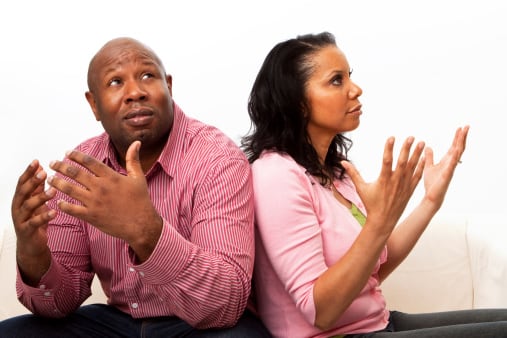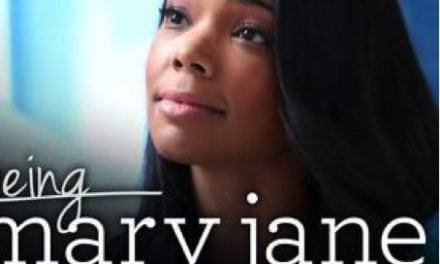A mother reflects on World Down Syndrome Day
I rarely thought about what people saw when my son and I were together. I assumed they saw what I did: an outgoing, charming and handsome African-American teenager, who never met a stranger. Then, on a recent Saturday outing, I had a rude awakening. 
That morning, Damani and I attended an annual event at the French Embassy in Washington, D.C. It was co-hosted by KEEN (Kids Enjoy Exercise Now) of which my son is a long-time participant. The event ended at about 3:00 p.m., but we weren’t ready to go home. So I decided to take us to an early dinner at a Greek eatery that my husband and I had frequented during our courtship.
We arrived at the eatery and, while in line, I told Damani about the vegetarian dishes his dad used to get. When it was our turn to order, Damani exuberantly rattled off what he wanted. As I was asking Damani to talk more slowly, I noticed
Five Facts About Down Syndrome
- There are three types of Down syndrome: trisomy 21 (nondisjunction) accounts for 95 percent of cases, translocation accounts for about 4 percent, and mosaicism accounts for about 1 percent.
- There are approximately 400,000 people living with Down syndrome in the United States.
- Down syndrome occurs in people of all races and economic levels.
- The incidence of births of children with Down syndrome increases with the age of the mother. But due to higher fertility rates in younger women, 80 percent of children with Down syndrome are born to women under 35 years of age. People with Down syndrome have an increased risk for certain medical conditions such as congenital heart defects, respiratory and hearing problems, Alzheimer’s disease, childhood leukemia and thyroid conditions. Many of these conditions are now treatable, so most people with Down syndrome lead healthy lives.
- Quality educational programs, a stimulating home environment, good health care and positive support from family, friends and the community enable people with Down syndrome to lead fulfilling and productive lives.
Source: National Down Syndrome Society
that the man behind the cash register was wearing a strange expression. When I started to order, he blurted: “I feel so sorry for you.”

Damani, who has Down syndrome, is a typical kid in many respects. Here, he rock climbs with his father.
What? I was stunned and shook my head, no, no, no. I didn’t want his pity. Fighting the urge to cry, I muttered, “My son is wonderful.”
The cashier, who meant no harm, looked unconvinced. My son has Down syndrome, and apparently, he couldn’t see beyond Damani’s intellectual disability. I shook off my hurt feelings and realized that some people would never see the possibilities in people with Down syndrome, unless they were educated about them.
That’s why World Down Syndrome Day (WDSD), March 21, 2016,* is important to those of us in the Down syndrome community. It’s our chance to educate people—such as the cashier at the Greek restaurant—who have a limited view of the genetic disorder: what it is, what it means to live with it and the vital role people with it can play in our lives. It’s also a day to celebrate the accomplishments of people living with the condition.
According to its founder, Down Syndrome International, WDSD was first observed in 2006. The day received a big boost in 2012 when the General Assembly of the United Nations observed it officially. The intergovernmental organization invited “all Member States, relevant organizations of the United Nations system and other international organizations, as well as civil society, including non-governmental organizations and the private sector, to observe World Down Syndrome Day in an appropriate manner, in order to raise public awareness of Down syndrome.”
My contribution to WDSD is this article. It was inspired by “How Do You See Me?” the WDSD 2016 PSA, created for CoorDown Onlus, Italy’s national organization for people with Down syndrome, and directed by Reed Morano. It stars actress Olivia Wilde and is narrated by AnnaRose Rubright, a 19-year-old college student who has Down syndrome (see link, above).
“I see myself as an ordinary person with an important, meaningful, beautiful life,” says Rubright, who lives in New Jersey, in her voiceover for the PSA.
“The metaphor in the video aims to [show] how people with Down syndrome see themselves, whilst revealing the inherent prejudice and discrimination that they face based on society’s preconceptions and stereotypical low expectations,” explains CoorDown President Sergio Silvestre in an ABC News interview.
As WDSD, now in its 11th year, grows globally, I hope that more people begin to see those with Down syndrome as more like themselves than not. So when Rubright asks near the end of the PSA, “How do you see me?” they will answer: “Fully human, like me.”
*The 21st day of the third month was chosen to signify Trisomy 21, the triplication of the 21st chromosome, the most common form of the condition.
Nicole Crawford-Tichawonna is web producer and associate editor for FierceforBlackWomen.com.








